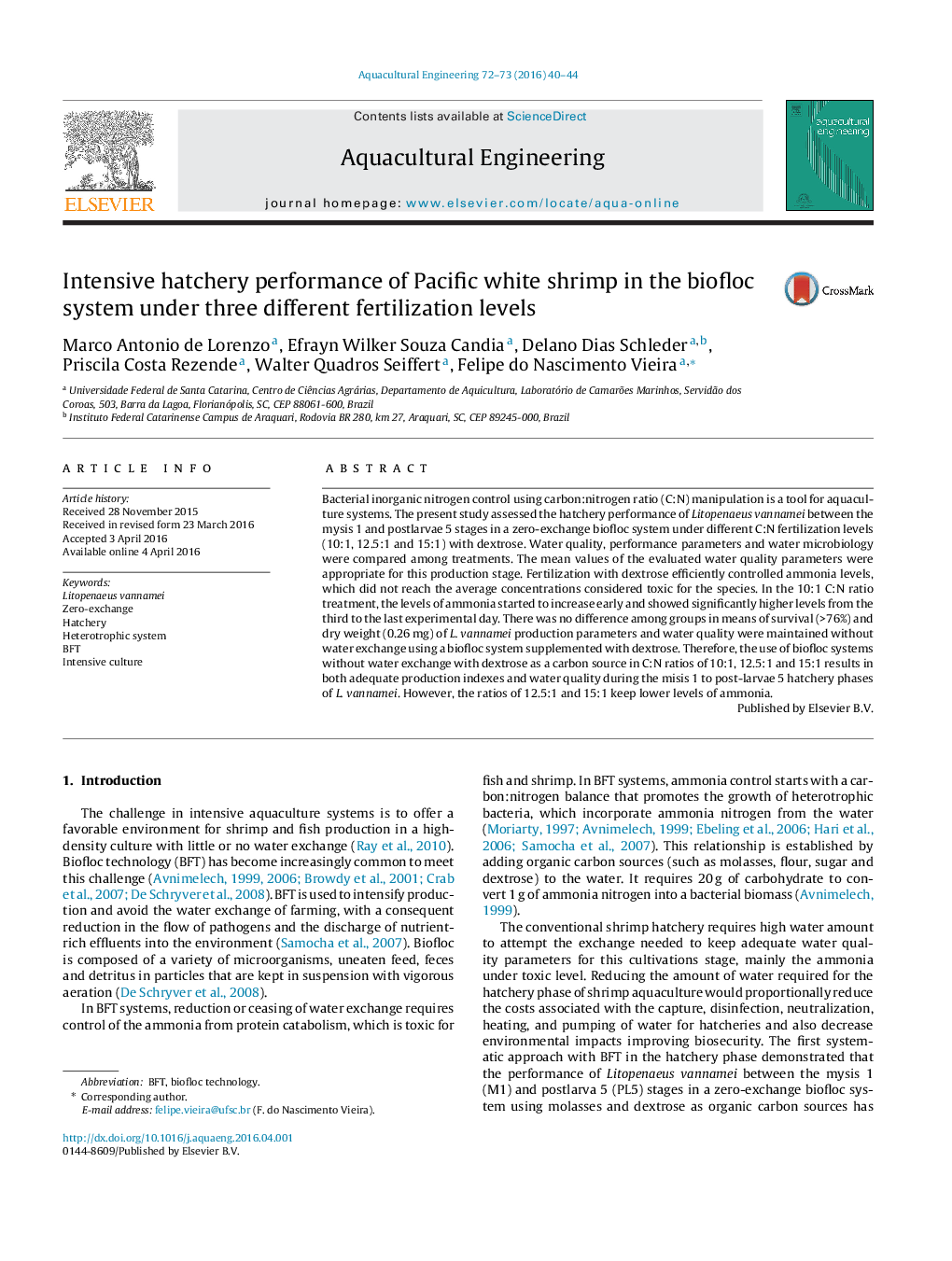| Article ID | Journal | Published Year | Pages | File Type |
|---|---|---|---|---|
| 4527120 | Aquacultural Engineering | 2016 | 5 Pages |
•A biofloc system in hatchery of shrimp is an option to conventional systems.•Fixed C:N ratios (10:1, 12.5:1 and 15:1) control ammonia levels safely.•Fixed C:N ratios result in an adequate production index in shrimp hatchery.
Bacterial inorganic nitrogen control using carbon:nitrogen ratio (C:N) manipulation is a tool for aquaculture systems. The present study assessed the hatchery performance of Litopenaeus vannamei between the mysis 1 and postlarvae 5 stages in a zero-exchange biofloc system under different C:N fertilization levels (10:1, 12.5:1 and 15:1) with dextrose. Water quality, performance parameters and water microbiology were compared among treatments. The mean values of the evaluated water quality parameters were appropriate for this production stage. Fertilization with dextrose efficiently controlled ammonia levels, which did not reach the average concentrations considered toxic for the species. In the 10:1 C:N ratio treatment, the levels of ammonia started to increase early and showed significantly higher levels from the third to the last experimental day. There was no difference among groups in means of survival (>76%) and dry weight (0.26 mg) of L. vannamei production parameters and water quality were maintained without water exchange using a biofloc system supplemented with dextrose. Therefore, the use of biofloc systems without water exchange with dextrose as a carbon source in C:N ratios of 10:1, 12.5:1 and 15:1 results in both adequate production indexes and water quality during the misis 1 to post-larvae 5 hatchery phases of L. vannamei. However, the ratios of 12.5:1 and 15:1 keep lower levels of ammonia.
